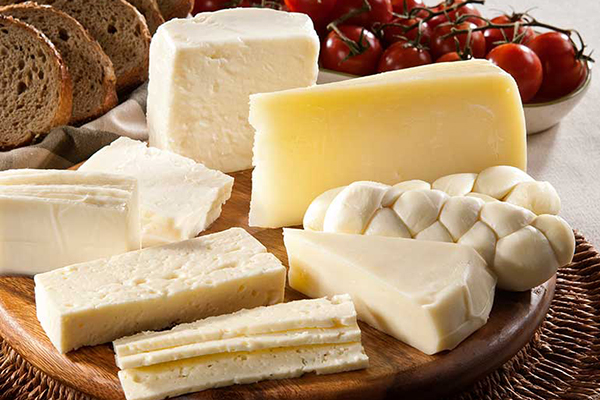We’ve all heard the age-old adage that drinking milk and eating cheese can make us grow taller. While it’s true that nutrition plays a vital role in our growth and development, does cheese genuinely increase height? In this article, we will delve into the scientific evidence behind this popular belief and explore the relationship between cheese consumption and height.
What is cheese?
Cheese is a dairy product made from milk, typically from cows, goats, or sheep. It is produced through a process of curdling and separating milk into solid curds and liquid whey. The curds are then pressed and aged to develop the distinctive flavors and textures associated with different types of cheese.
Cheese comes in a wide variety of styles, tastes, and textures, ranging from soft and creamy to hard and crumbly. Some popular types of cheese include cheddar, mozzarella, brie, gouda, feta, and blue cheese, among many others.
Throughout history, cheese has been a staple in many cultures and cuisines worldwide. It is used in a myriad of culinary applications, including sandwiches, pasta dishes, salads, pizzas, and as a standalone appetizer or snack.
Besides its delicious taste and versatility in cooking, cheese is also a valuable source of essential nutrients. It contains high-quality proteins, calcium, vitamins, and minerals, making it an important component of a balanced diet for many people.
Overall, cheese is a beloved and cherished food enjoyed by people of all ages and backgrounds, and its rich and diverse flavors make it a culinary delight around the world.

Types of cheese
There are numerous types of cheese, each with its unique flavor, texture, and characteristics. Here are some popular types of cheese:
- Cheddar: Cheddar is a widely consumed cheese with a sharp, tangy flavor that becomes more intense as it ages. It is a versatile cheese used in sandwiches, burgers, and macaroni and cheese dishes.
- Mozzarella: Mozzarella is a soft, mild cheese with a stretchy texture, commonly used in pizzas and Italian cuisine. Fresh mozzarella is often enjoyed with tomatoes and basil in a classic Caprese salad.
- Brie: Brie is a soft, creamy cheese with a mild and buttery taste. It has a bloomy rind and is best served at room temperature, spread on crackers or bread.
- Gouda: Gouda is a semi-hard cheese with a nutty flavor. It comes in various ages, from young and mild to aged and robust. Gouda is delicious on cheese platters and in sandwiches.
- Parmesan: Parmesan, or Parmigiano-Reggiano, is a hard, granular cheese with a rich, savory flavor. It is commonly grated over pasta dishes and salads.
- Swiss: Swiss cheese has distinctive holes (known as “eyes”) and a mild, slightly nutty taste. It is often used in sandwiches and melts well in hot dishes.
- Feta: Feta is a crumbly and tangy cheese, usually made from sheep’s milk or a combination of sheep’s and goat’s milk. It is a staple in Greek salads and Mediterranean dishes.
- Blue Cheese: Blue cheese has a characteristic blue or green mold and a strong, pungent flavor. It is enjoyed crumbled on salads or as a spread for crackers.
- Camembert: Camembert is a soft, creamy cheese with a bloomy rind, similar to Brie. It has a rich and earthy flavor and is often served as a dessert cheese.
- Provolone: Provolone is an Italian cheese with a firm texture and a slightly smoky flavor. It is commonly used in sandwiches and on pizza.
- Gorgonzola: Gorgonzola is a veined blue cheese with a sharp and tangy taste. It is great on salads or as a topping for steaks and burgers.
- Ricotta: Ricotta is a creamy, mild cheese with a slightly sweet flavor. It is commonly used in Italian desserts and pasta dishes.
These are just a few examples of the many types of cheese available. The world of cheese is vast and diverse, offering a delightful range of flavors and textures to suit various culinary preferences
The Nutritional Content of Cheese
Cheese is a dairy product known for its rich nutritional profile. It contains a variety of essential nutrients that contribute to overall health and well-being. Let’s take a closer look at the nutritional components found in cheese:
Protein
Protein is a fundamental building block of the body, essential for the growth and repair of tissues. Cheese is an excellent source of high-quality protein, making it beneficial for individuals looking to maintain or increase their muscle mass.
Calcium
Calcium is perhaps the most well-known nutrient associated with cheese. This mineral is vital for the development and maintenance of strong bones and teeth. Adequate calcium intake during childhood and adolescence is especially important for optimal bone growth.
Phosphorus
Working in tandem with calcium, phosphorus also plays a significant role in bone health. It contributes to the formation and mineralization of bones and teeth, further enhancing the benefits of cheese for skeletal development.
Magnesium
Cheese contains magnesium, another essential mineral that supports various biochemical reactions in the body. Magnesium is involved in muscle function, nerve transmission, and energy production, making it a crucial component of a well-rounded diet.
Zinc
Zinc is a trace mineral that supports the immune system, helps with wound healing, and contributes to healthy skin. Including cheese in the diet can help ensure adequate zinc intake.
Vitamins A and B2
Cheese is a good source of vitamin A, which is essential for vision, immune function, and skin health. Additionally, it contains vitamin B2 (riboflavin), which plays a role in energy metabolism and the maintenance of healthy skin and eyes.
Vitamin B12
Vitamin B12 is vital for red blood cell production and proper nerve function. While it is predominantly found in animal products, cheese is one of the sources that can provide this essential vitamin.
Vitamin D
Some varieties of cheese, particularly those made from fortified milk, may contain vitamin D. This vitamin is crucial for calcium absorption, making it an essential nutrient for bone health.
It’s important to note that the nutritional content of cheese can vary depending on the type and processing methods. While some cheeses may be high in certain nutrients, others might contain higher fat or sodium levels. Moderation and choosing healthier options are key to incorporating cheese into a balanced diet and reaping its nutritional benefits.
How does cheese consumption affect height development?
Cheese contains calcium and protein, which are beneficial for building strong bones and muscles. Calcium is a key component of bones, with over 99% of the body’s calcium found in bones and teeth. Additionally, other nutrients like phosphorus, vitamin B12, vitamin D, and vitamin K present in cheese also play a role in bone development, supporting significant height gain.
Fermented foods like cheese contain beneficial probiotics for gut health. Consuming cheese properly and in appropriate amounts can improve digestion, aiding in efficient nutrient absorption. The fat in cheese, containing linoleic acid, may help reduce inflammation and even prevent heart disease and obesity when consumed in moderation. These health benefits all contribute to supporting height improvement in children.

Things to Consider When Consuming Cheese to Increase Height
While cheese can offer certain nutritional benefits for bone health and growth, it’s essential to be mindful of certain factors to maximize its potential effect on height. Here are some key considerations when consuming cheese to support height increase:
- Moderation is Key: While cheese contains valuable nutrients, it’s calorie-dense and can be high in saturated fats and sodium. To avoid potential health risks, consume cheese in moderation as part of a balanced diet.
- Choose Nutrient-Rich Varieties: Opt for cheeses that are lower in fat and sodium while still providing essential nutrients like calcium and protein. Low-fat or reduced-sodium options can be a healthier choice.
- Pair Cheese with Other Foods: Incorporate cheese into meals with a variety of nutrient-rich foods. Combining cheese with vegetables, whole grains, and lean proteins can enhance its nutritional benefits.
- Balanced Diet: Relying solely on cheese for nutritional needs is not sufficient. Ensure a well-balanced diet that includes a diverse range of food groups to support overall growth and development.
- Consider Lactose Intolerance: Individuals with lactose intolerance should choose lactose-free or low-lactose cheese options to avoid digestive discomfort.
- Age-Appropriate Consumption: While cheese can be beneficial for children and adolescents, the quantity and frequency of consumption should align with individual nutritional needs and growth stages.
- Physical Activity: Combine cheese consumption with regular physical activity, as exercise plays a crucial role in promoting bone health and overall growth.
- Consult a Healthcare Professional: If you have specific health concerns or questions about including cheese in your diet to support height increase, it’s advisable to consult a healthcare professional or a registered dietitian for personalized advice.
Remember that while cheese can provide valuable nutrients, genetics and overall nutrition play a more significant role in determining height. Incorporate cheese into a well-rounded diet along with a healthy lifestyle to support optimal growth and development during the formative years.
The amount of cheese needed to consume per day to ensure height development.
The amount of cheese to consume daily to ensure height development varies based on individual nutritional needs and overall dietary habits. While cheese can contribute to bone health and growth, it’s essential to consume it in moderation and as part of a balanced diet. Here are some general guidelines:
- Age and Growth Stage: For children and adolescents who are still in their formative years, cheese can be included as part of their daily diet to support bone development. However, the quantity should align with their overall nutritional needs.
- Dietary Requirements: The amount of cheese needed may vary depending on an individual’s overall diet and nutrient intake. If someone already consumes sufficient calcium and protein from other sources, the cheese intake can be adjusted accordingly.
- Nutritional Content: Consider the nutritional content of the cheese being consumed. Opt for lower-fat and lower-sodium varieties that still provide essential nutrients like calcium, protein, and vitamins.
- Moderation: As cheese is calorie-dense, it’s crucial to consume it in moderation. Excessive intake may lead to health issues such as weight gain and increased saturated fat intake.
- Consult a Professional: To determine the appropriate amount of cheese to include in one’s diet for height development, it’s best to consult a registered dietitian or healthcare professional. They can provide personalized recommendations based on individual health needs and goals.
Conclusion
While cheese is undoubtedly a nutritious food with valuable nutrients, it does not have a direct impact on increasing height. Genetics and overall nutrition are the primary influencers of height. A balanced diet, regular exercise, and a healthy lifestyle are key factors in achieving optimal growth during the formative years.
- Related post: How Tall Is a 10-Year-Old Child?



